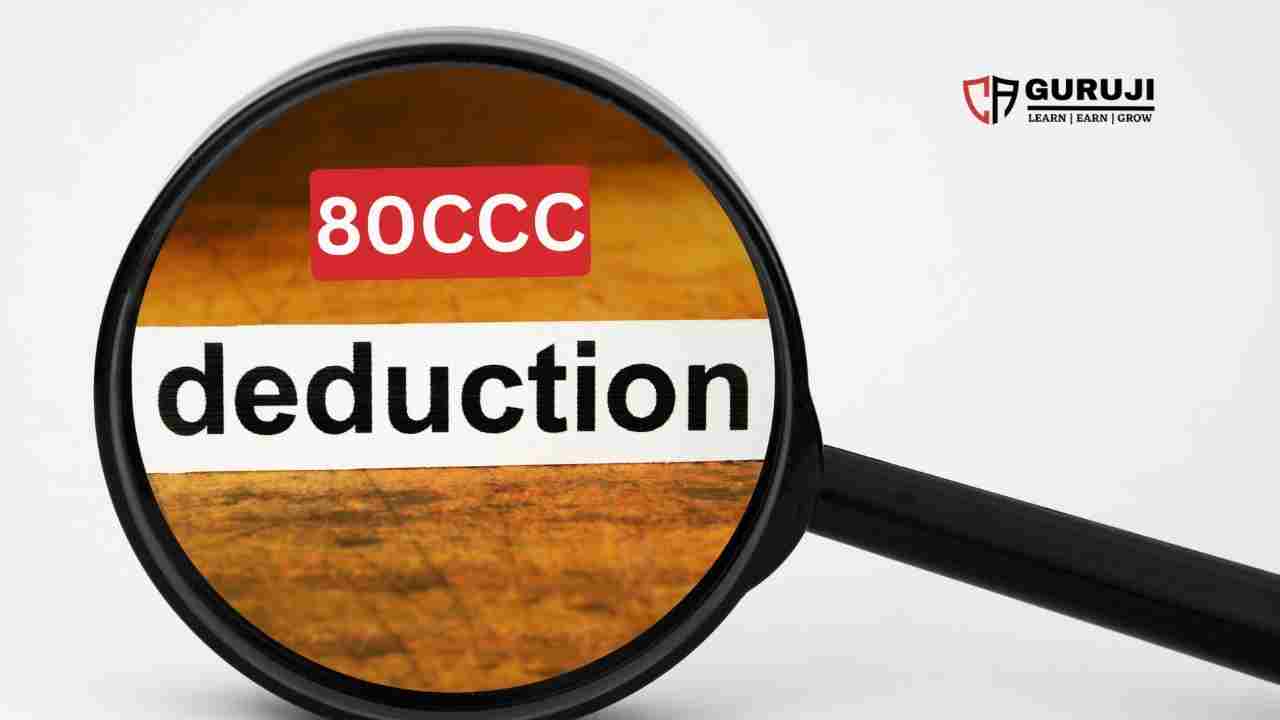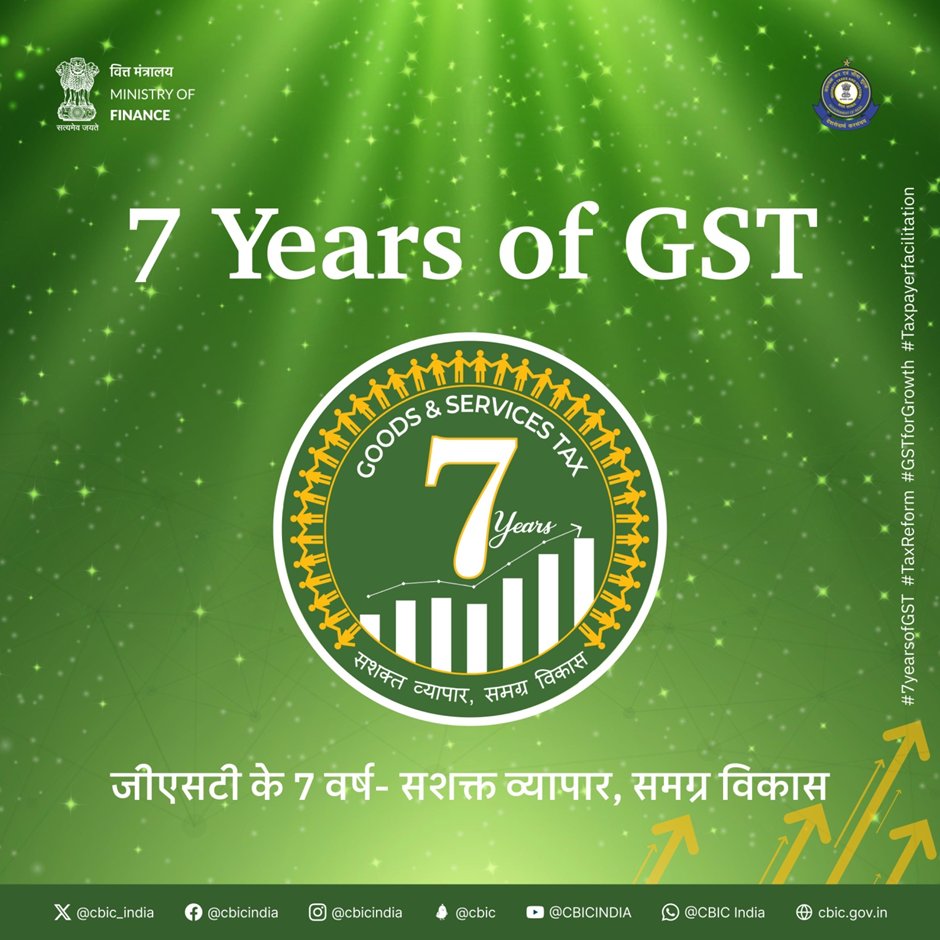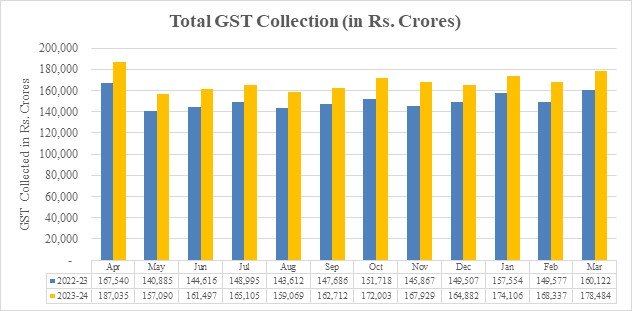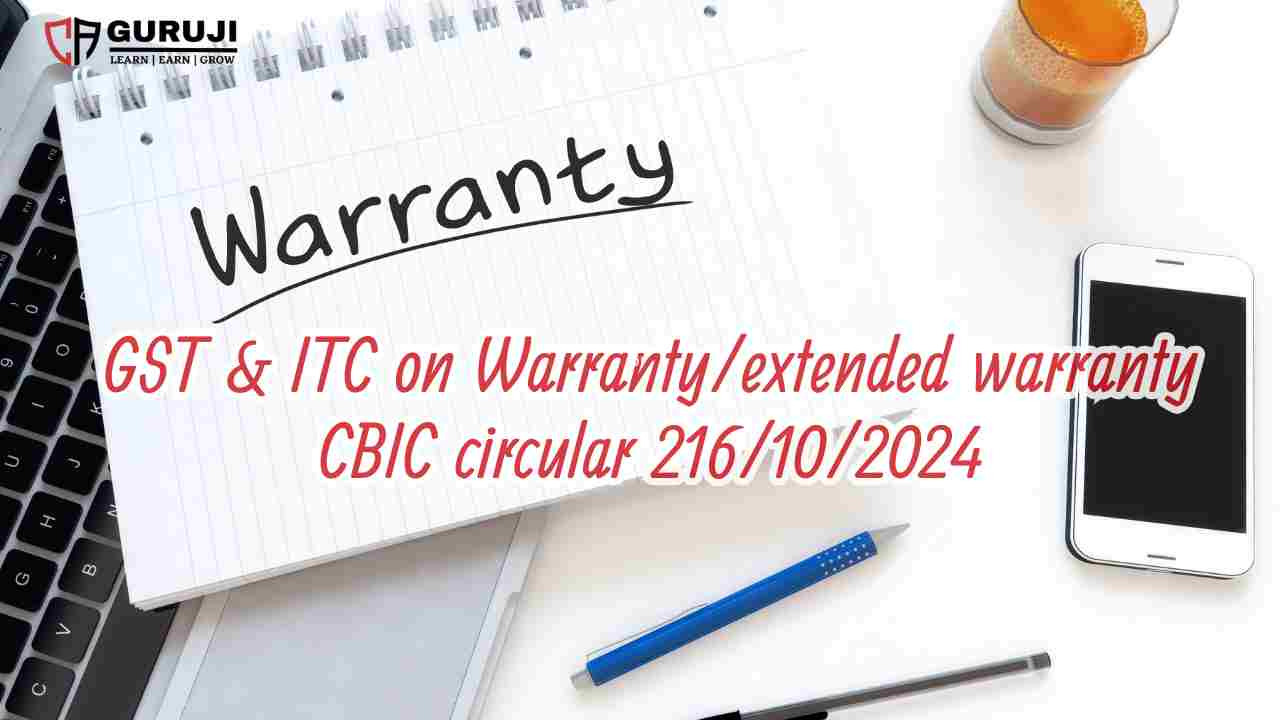When it comes to reducing tax liabilities, Indian taxpayers often utilize various provisions under the Income Tax Act. Three commonly used options for saving taxes are Section 80C, Section 80CCD, and Section 80CCC. Section 80CCC allows taxpayers to save a significant amount of tax by contributing to pension funds.
Under Section 80CCC, taxpayers can claim deductions for contributions made to certain pension schemes. These contributions are deductible from the total income, thereby reducing the taxable income and ultimately lowering the tax liability. It’s important to note that the total deduction under Sections 80C, 80CCC, and 80CCD combined cannot exceed Rs. 1.5 lakh in a financial year.
By investing in pension schemes covered under Section 80CCC, taxpayers not only save taxes but also secure their financial future through retirement planning. It’s advisable for taxpayers to explore various pension schemes offered by insurers and financial institutions to choose the one that best suits their needs and financial goals while maximizing tax benefits.
Section 80CCC: Deduction in respect of contribution to certain pension funds as per Income Tax Act
80CCC. (1) Where an assessee being an individual has in the previous year paid or deposited any amount out of his income chargeable to tax to effect or keep in force a contract for any annuity plan of Life Insurance Corporation of India or any other insurer for receiving pension from the fund referred to in clause (23AAB) of section 10, he shall, in accordance with, and subject to, the provisions of this section, be allowed a deduction in the computation of his total income, of the whole of the amount paid or deposited (excluding interest or bonus accrued or credited to the assessee’s account, if any) as does not exceed the amount of one hundred and fifty thousand rupees in the previous year.
(2) Where any amount standing to the credit of the assessee in a fund, referred to in sub-section (1) in respect of which a deduction has been allowed under sub-section (1), together with the interest or bonus accrued or credited to the assessee’s account, if any, is received by the assessee or his nominee—
(a) on account of the surrender of the annuity plan whether in whole or in part, in any previous year, or
(b) as pension received from the annuity plan,
an amount equal to the whole of the amount referred to in clause (a) or clause (b) shall be deemed to be the income of the assessee or his nominee, as the case may be, in that previous year in which such withdrawal is made or, as the case may be, pension is received, and shall accordingly be chargeable to tax as income of that previous year.
(3) Where any amount paid or deposited by the assessee has been taken into account for the purposes of this section,—
(a) 56[***]
(b) a deduction with reference to such amount shall not be allowed under section 80C for any assessment year beginning on or after the 1st day of April, 2006.
Now lets Know in easy language:
Section 80CCC is a provision under the Income Tax Act of India that allows taxpayers to claim deductions for contributions made to certain pension schemes. This section specifically pertains to contributions made to annuity plans of insurance companies. The purpose of Section 80CCC is to encourage individuals to save for their retirement by providing tax incentives.
Deduction Limit: The deduction allowed under Section 80CCC is within the overall limit of Rs. 1.5 lakh available under Section 80CCE. This means that the total deduction claimed under Sections 80C, 80CCC, and 80CCD(1) combined cannot exceed Rs. 1.5 lakh in a financial year.
Eligible Investments: Contributions made to annuity plans of insurance companies qualify for deductions under Section 80CCC. These annuity plans are specifically designed for retirement savings and provide regular pension payments after retirement.
Tax Benefit: The contributions made towards eligible annuity plans are deductible from the total income of the taxpayer. By reducing the taxable income, the taxpayer can lower their tax liability for the financial year.
Lock-in Period: The contributions made to annuity plans usually come with a lock-in period, during which the funds cannot be withdrawn. This ensures that the contributions are primarily used for retirement purposes.
Pension Income Taxation: It’s important to note that while the contributions to annuity plans are deductible, the pension income received from these plans in the future will be taxable as per the prevailing tax laws.
Types of Annuity Plans: While Section 80CCC primarily covers contributions made to annuity plans offered by insurance companies, it’s important to note that these plans come in various forms. They may include immediate annuity plans, where pension payments start immediately after the lump sum payment, or deferred annuity plans, where the pension payments start at a future date chosen by the policyholder.
Age Criteria: There’s typically no specific age criteria for contributing to annuity plans under Section 80CCC. However, the tax benefits associated with these contributions are generally availed of by individuals who are planning for their retirement or seeking to supplement their pension income.
Documentation: Taxpayers need to maintain proper documentation of the contributions made to annuity plans to claim deductions under Section 80CCC. This includes keeping records of premium payments and policy documents provided by the insurance company.
Combining with Other Deductions: Section 80CCC can be combined with other tax-saving options such as Section 80C and Section 80CCD(1) to maximize tax benefits. Taxpayers should assess their overall tax planning needs and utilize these provisions accordingly.
Limits and Restrictions: While Section 80CCC provides tax benefits, there may be certain limits and restrictions associated with the deductions claimed. It’s advisable for taxpayers to consult with tax professionals or financial advisors to understand the specific rules and implications.
Financial Planning: Contributing to annuity plans under Section 80CCC is not just about tax savings; it’s also a critical aspect of long-term financial planning, particularly for retirement. By systematically investing in such plans, individuals can build a corpus that will provide financial security during their retirement years.
In summary, Section 80CCC offers taxpayers a valuable opportunity to save for retirement while simultaneously reducing their tax liabilities. However, it’s essential to understand the nuances of the provision and make informed decisions regarding contributions to annuity plans.
Choose the Right Instruments under Section 80ccc:-
Annuity Plans: Annuity plans offered by insurance companies are the primary instruments eligible under Section 80CCC. When choosing an annuity plan, consider factors such as:
- Type of Annuity: Immediate or deferred, depending on when you want to start receiving pension payments.
- Rate of Return: Look for plans offering competitive returns while ensuring the safety of your investment.
- Flexibility: Some plans offer flexibility in terms of payment frequency, annuity options, and rider benefits.
Pension Funds: Some mutual funds offer pension schemes that qualify for deductions under Section 80CCC. Consider the following when selecting pension funds:
- Fund Performance: Evaluate the historical performance of the fund to assess its potential returns.
- Fund Manager Expertise: Assess the experience and track record of the fund manager managing the pension fund.
- Investment Strategy: Understand the investment approach of the fund and whether it aligns with your risk profile and investment objectives.
National Pension System (NPS): While contributions to NPS primarily fall under Section 80CCD(1), additional contributions to NPS Tier I account beyond the limit of Section 80CCD(1) can be considered under Section 80CCC. Factors to consider when opting for NPS include:
- Tax Efficiency: NPS offers tax benefits at the time of investment, accumulation, and withdrawal (subject to certain conditions).
- Asset Allocation: NPS allows you to choose between equity, corporate bonds, and government securities based on your risk appetite.
- Long-term Planning: NPS is designed for retirement planning, so consider your retirement goals and investment horizon.
Public Provident Fund (PPF): While PPF falls under Section 80C, it’s worth mentioning as it’s a popular tax-saving instrument. Factors to consider when investing in PPF include:
- Fixed Returns: PPF offers guaranteed returns, making it a relatively safer investment option.
- Long-term Commitment: PPF has a lock-in period of 15 years, so consider whether you’re comfortable with the long-term commitment.
- Tax Benefits: In addition to tax deductions on contributions, interest earned and withdrawals from PPF are tax-free.
Employee Provident Fund (EPF): EPF contributions made by salaried individuals also qualify for deductions under Section 80C. Factors to consider include:
- Employer Matching: Some employers match employee contributions to EPF, enhancing the overall benefits.
- Withdrawal Rules: EPF has specific rules regarding premature withdrawal, so consider the liquidity aspect.
- Interest Rate: EPF offers a competitive interest rate, often higher than other fixed-income instruments.
What tax benefit is allowed on investments under Section 80CCC of the Income Tax Act?
Investments made under Section 80CCC of the Income Tax Act allow taxpayers to claim deductions from their taxable income. These deductions are available for contributions made towards certain pension schemes, including annuity plans offered by insurance companies. The maximum deduction allowed under Section 80CCC, along with deductions under Sections 80C and 80CCD(1), cannot exceed Rs. 1.5 lakh in a financial year.
- Deductions from Taxable Income: Contributions made towards eligible pension schemes, such as annuity plans offered by insurance companies, qualify for deductions under Section 80CCC.
- Maximum Deduction Limit: The total deduction under Sections 80C, 80CCC, and 80CCD(1) combined cannot exceed Rs. 1.5 lakh in a financial year.
- Eligible Investments: Contributions to annuity plans provided by insurance companies are typically eligible for deductions under Section 80CCC. These plans are designed to provide a regular income stream post-retirement.
- Tax Savings: By investing in eligible pension schemes and availing of deductions under Section 80CCC, taxpayers can reduce their taxable income, thereby lowering their overall tax liability.
- Long-term Planning: Section 80CCC encourages individuals to plan for their retirement by incentivizing contributions to pension schemes. It promotes financial security in the later stages of life by encouraging systematic savings during the earning years.
- Documentation: Taxpayers need to maintain proper documentation of the contributions made to pension schemes to claim deductions under Section 80CCC. This includes keeping records of premium payments and policy documents provided by the insurance company.
- Flexibility in Investment: While contributions to annuity plans are eligible for deductions, individuals have the flexibility to choose the type of annuity plan that suits their financial goals and risk appetite, such as immediate or deferred annuities.
- Pension Income Taxation: It’s important to note that while contributions to pension schemes are deductible, the pension income received in the future will be taxable as per the prevailing tax laws.
What are the terms and conditions associated with Section 80CCC of the Income Tax Act?
- Insurance Premium Payment: Section 80CCC allows individuals to claim deductions for premiums paid towards life insurance policies from their taxable income.
- Withdrawal Conditions: Under Section 10(23AAB), withdrawals from the policy should be made from the accumulated funds.
- Exclusion of Bonuses and Interest: Bonuses received or interest accumulated within the policy are not eligible for deduction under Section 80CCC.
- Taxation on Pension: Any monthly pension received from the policy is taxable at the prevailing rates.
- Taxation upon Surrender: If the policy is surrendered, the amount received would be subject to taxation.
- Rebates Before April 2006: Any rebates available on investment in annuity plans before April 2006 are not applicable under Section 88.
- Pre-April 2006 Deposits: Amounts deposited before April 2006 are not eligible for deduction under Section 80CCC.
- Lock-in Period: Insurance policies eligible under Section 80CCC typically have a lock-in period, during which withdrawals may not be allowed or may attract penalties.
- Age Restrictions: Some policies may have age restrictions for availing deductions or for receiving pension benefits. It’s essential to review the terms and conditions of the policy regarding age limits.
- Policy Continuation: To claim deductions under Section 80CCC, individuals must continue paying premiums regularly as per the policy terms. Failure to do so may result in the loss of tax benefits.
- Tax Treatment of Surrender Value: The surrender value of a policy, if surrendered prematurely, may be subject to taxation based on the duration of the policy and the premiums paid.
- Impact of Amendments: Changes in tax laws and regulations may affect the benefits available under Section 80CCC. It’s advisable to stay updated with the latest tax provisions to make informed financial decisions.
- Policy Terms and Conditions: Each insurance policy may have specific terms and conditions regarding deductions, withdrawals, and taxation. It’s crucial to read and understand the policy document thoroughly before making any financial commitments.
- Disclosure Requirements: Taxpayers must accurately disclose details of their insurance policies and any deductions claimed under Section 80CCC while filing their income tax returns to avoid penalties or scrutiny by tax authorities
Who is eligible to claim the deduction under Section 80CCC of the Income Tax Act?
- Individual Taxpayers: Both salaried individuals and self-employed individuals are eligible to claim deductions under Section 80CCC.
- Resident Individuals: Any resident individual taxpayer of India can avail of deductions under this section.
- Contribution to Pension Schemes: Eligibility is based on contributions made towards specified pension schemes, such as annuity plans offered by insurance companies.
- Policyholder: The taxpayer must be the policyholder and contributor towards the pension scheme to claim deductions under Section 80CCC.
- Tax Filing Status: Individuals must file their income tax returns to claim deductions under Section 80CCC.
Visit www.cagurujiclasses.com for practical courses











